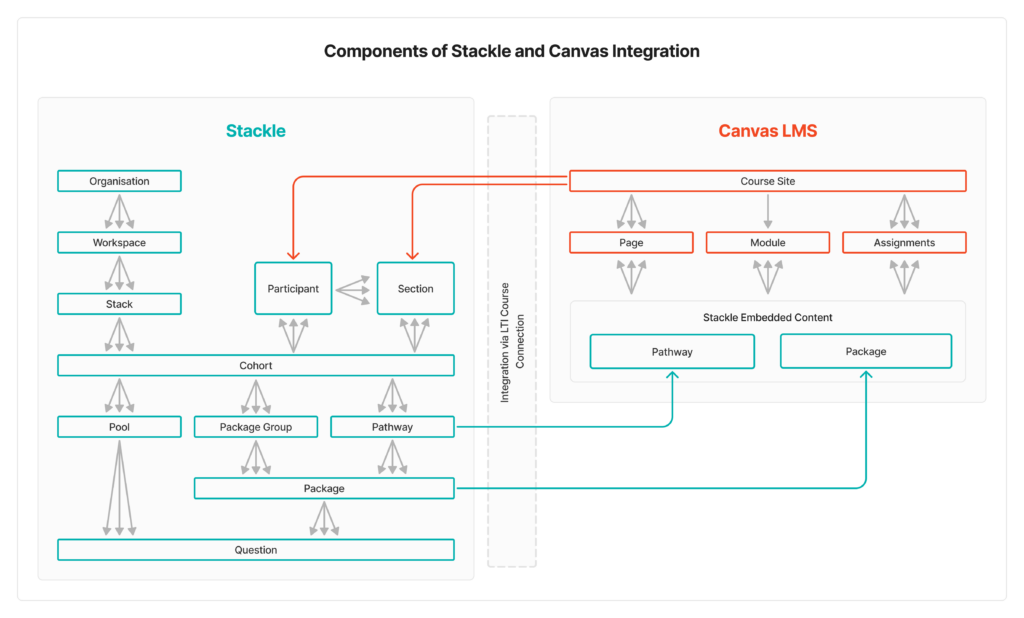Overview #
A Package Group helps you to organize and manage your Packages into useful groupings appropriate to your course design. This will help you when deploying your Packages within you learning content, either when publishing Packages or choosing Questions to add to a Pathway.
As a primary container for Packages, a Package Group will automatically apply its Use Case type by default to any newly created Packages, streamlining the editing process. This default setting can be overridden as needed. Read Configuring a Package for more information on how to do this.

View of Package Group Editor
Where do Package Groups fit in Stackle? #
Package Groups sit directly under a Cohort. They can contain many Packages.

How can we use Package Groups? #
Package Groups serve as versatile containers that can be employed for various purposes. Here are some ways you can use Package Groups to organise your Packages:
- Learning Journals: Use Package Groups to compile reflective exercises or logs that encourage students to document their learning experiences, challenges, and accomplishments throughout a course. By including Packages with reflective prompts, journaling exercises, or self-assessment tasks, learners can develop a deeper understanding of the course material and their personal growth.
- Knowledge Check-ins: Organize periodic assessments within a Package Group to gauge students’ understanding of key concepts or skills, allowing you to identify areas that may need reinforcement or clarification.
- Scaffolded Assessments: Arrange Packages within a Package Group to build progressively on students’ knowledge and skills, with each assessment designed to gradually increase in complexity, promoting deep learning and mastery of the subject matter.
- Thematic Collections: Organize Packages within a Package Group based on specific themes or topics, making it easier for students to access and navigate relevant material.
- Skill Development: Create Package Groups focused on particular skills or competencies, allowing students to work through exercises and assessments designed to develop and enhance those specific abilities.
- Differentiated Instruction: Design Package Groups to address the diverse learning needs, interests, and preferences of your students, offering customized learning paths and resources tailored to individual learners.
- Collaborative Projects: Use Package Groups to facilitate teamwork by providing a centralized location for group assignments, discussions, and assessments, fostering communication and collaboration among students.
- Self-paced Learning: Organize Packages within a Package Group to provide students with a flexible, self-directed learning experience, enabling them to work through content at their own pace and in their preferred order.
- Flipped Classroom: Utilize Package Groups to facilitate a flipped classroom approach by creating Packages that include pre-recorded lectures, videos, and reading materials for students to review before attending class. This allows class time to be dedicated to more interactive, hands-on learning experiences, such as discussions, problem-solving, or group work.
- Polling: Package Groups can be employed to organize Packages containing polls or surveys. These can be used to gather student opinions, measure their understanding of course material, or gauge their interest in specific topics. Polling can be an effective way to foster engagement, gather feedback, and inform future instruction.
At Stackle, we continually strive to discover new and innovative ways to utilize our platform, and we greatly value input from our community. If you have come across a unique use case that isn’t listed in our resources, we encourage you to share your experience with us. By doing so, you’ll be contributing to the knowledge base of our community and helping others to expand their toolkit of effective strategies. Your insights and creativity are essential to the ongoing development and improvement of Stackle, and we look forward to learning from your experiences.